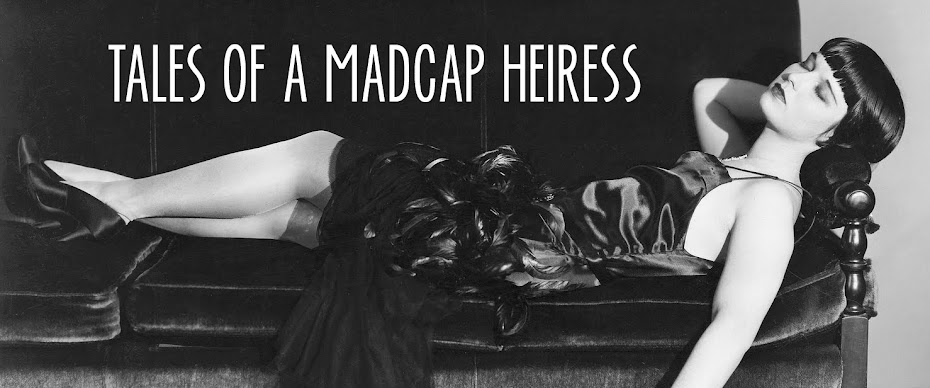Bronia and Tylia Perlmutter (1922)
On my shelves are a fair amount of books about the
Lost Generation and one that I return to again and again is Billy Klüver and Julie Martin’s Kiki’s Paris. It’s filled with loads of
stories and wonderful images that I can spend hours poring over.
This photo of Bronia and Tylia Perlmutter is one of
my favourites in the book. Bronia, the younger sister, demurely averts her eyes while elder sister Tylia stares almost insolently at the camera, holding a boudoir
doll in her hand. It is the seemingly shy Bronia who draws our attention.
What thoughts are going on behind those downcast eyes?
There is not a lot of information about Bronia but I
discovered that the sisters were Polish Jews raised in the Netherlands who
came to Paris in 1922 when Tylia was 18 and Bronia 16. They both found work
modelling for various artists in Montparnasse. Bronia was particularly popular
with Nils Dardel, Foujita,
and Moïse Kisling
(she would often act as hostess for Kisling at luncheons he hosted). She also modelled clothes for designers
Paul Poiret and Nicole Grolt that she would wear out at night.
"Young Girl Depicting Bronia Perlmutter" Nils Dardel (1925)
Bronia and
Tylia made appearances in the works of Lost Generation writers as well. Djuna Barnes and
Robert McAlmon wrote about them, as did Ernest Hemingway in A Moveable Feast where they are referred
to simply as the two models. Hemingway describes Bronia as “beautifully built
with a falsely fragile depravity.”
It's not surprising that artists wanted to capture her beauty. Bronia was
lovely in an ethereal way with dark hair and large, blue-grey eyes. She liked to dance and one evening in 1923 at Le Boeuf sur le Toit she met the young writer Raymond Radiguet who danced with her and soon declared that he planned to marry her.
A jealous Jean Cocteau became angry and, according to Bronia, threatened to
have Bronia and her sister deported. The young couple hid out at the Hôtel Foyot to avoid Cocteau. But Radiguet became ill and died from typhoid fever that year at the age of 20.
In
addition to modelling, Bronia also did a little acting. For Galerie des Monstres (1924) director Jacque Catelain gathered
Montparnasse locals to star in the film; Bronia appears as a dancing doll and
Tylia as a juggler. The film also has appearances by Kiki and a young Lois
Moran.
Bronia Perlmutter. Photo: Berenice Abbott.
In
December of 1924 Bronia and Tylia were invited by Francis Picabia to attend a
performance of the Dadaist ballet Relâche, which included a screening of a short film, Entr'acte, at
intermission. Bronia was introduced to the film’s director, René Clair, after the show. Later that same month
Picabia asked Bronia to participate in a production, Ciné Sketch, that he and Clair were putting on after the ballet on New Year’s Eve. Bronia agreed, and she and Marcel
Duchamp appeared nude—Duchamp did have a strategically placed fig leaf—in a
living tabloid of Lucas Cranach’s Adam
and Eve, which Man Ray photographed.
A bit part in Clair’s film Le Voyage Imaginaire (1926) followed. The
two fell in love and were married in 1926. They had one son, Jean-François, who was born in 1927. Bronia gave up modelling to devote herself to Clair, and they would remain married until
Clair’s death in 1981.
I wondered what had become of Bronia. Then one day I was
watching the Criterion Collection release of Clair’s À Nous la Liberté
(1931) and there on the DVD extras was an interview from 1998 with an elderly
Bronia who spoke about her early life and her husband. She was now a grand
old Parisian lady but when she turned her head a certain way or flashed those mysterious eyes you could see the young girl in the photo from all those years ago.











































